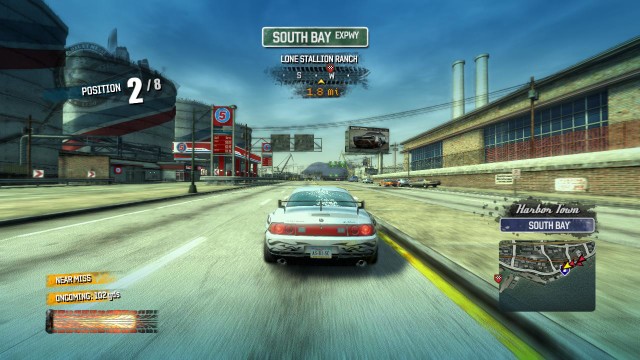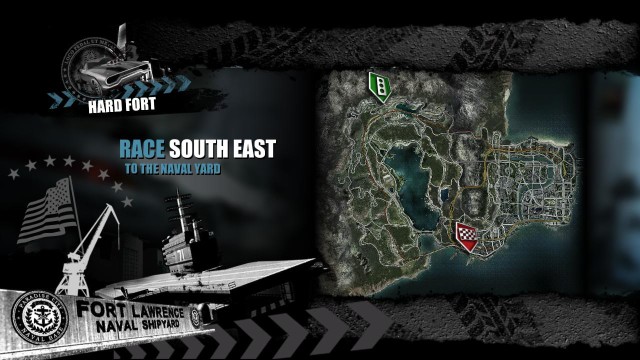The first of the series to situate all its events within a single open-world environment, Burnout Paradise uses the structure of its progression system to foster a sense familiarity with the streets of Paradise City, while pushing players to move outside their comfort zone.
Indicated by stoplights at 120 intersections throughout Paradise City, there are five main types of event you can compete in. The majority of them (Race, Marked Man and Burning Route) are point-to-point events that task you with driving from the starting intersection to one of eight possible finish lines – one for each of the cardinal and ordinal compass directions. The remaining events (Road Rage and Stunt Run) are free-form contests that require you to achieve a specific objective within a time limit.

Completing these events forms the basis of the progression system in Burnout Paradise, winning events causes new cars to appear on the streets for you to chase down and add to your collection. Framing this progression system is your license. Starting with a Learner’s Permit – upgrading through the Burnout License, to the ultimate Criterion Elite License – these serve as an indication of how many events you have completed. It is necessary to win two events in order to achieve the first upgrade (Class D License) from there an additional seven wins are required for the next (Class C License). The first five license upgrades are awarded after the following wins: 2nd, 7th, 15th, 26th and 40th.
The notable aspect of this progression is that once a new license has been reached all events are reset allowing you to return to previously completed events (albeit with more challenging opponents or increased scoring thresholds) and have those wins again count toward your total for the next license. With 120 events available it’s not necessary to complete the same events again, though doing so means you can focus on the specific event types you are strongest at, or on those routes where you have already uncovered the best shortcuts.
Once you have obtained the Burnout license you will need to complete all 120 events in order to upgrade to the next license.

For each license from the Learner’s Permit to the Burnout License, players are required to complete three more new events than was necessary for the proceeding license. This steady increase in the number of required new events encourages players out of their comfort zone while still allowing them to focus the majority of their time on events and event types they are already comfortable with.
While it’s possible to progress through the licenses – unlocking more cars along the way – by focusing on a small subset of the activities available, the final tiers of licenses, and the best cars, are only available when you show you are capable across all the different event types. As these events all take place upon the same streets, the shortcuts you learned early in the game can still prove vital to your success when racing toward that final license. In this way Burnout Paradise pushes players to turn their growing familiarity with the streets of Paradise City into direct progress toward their next license.